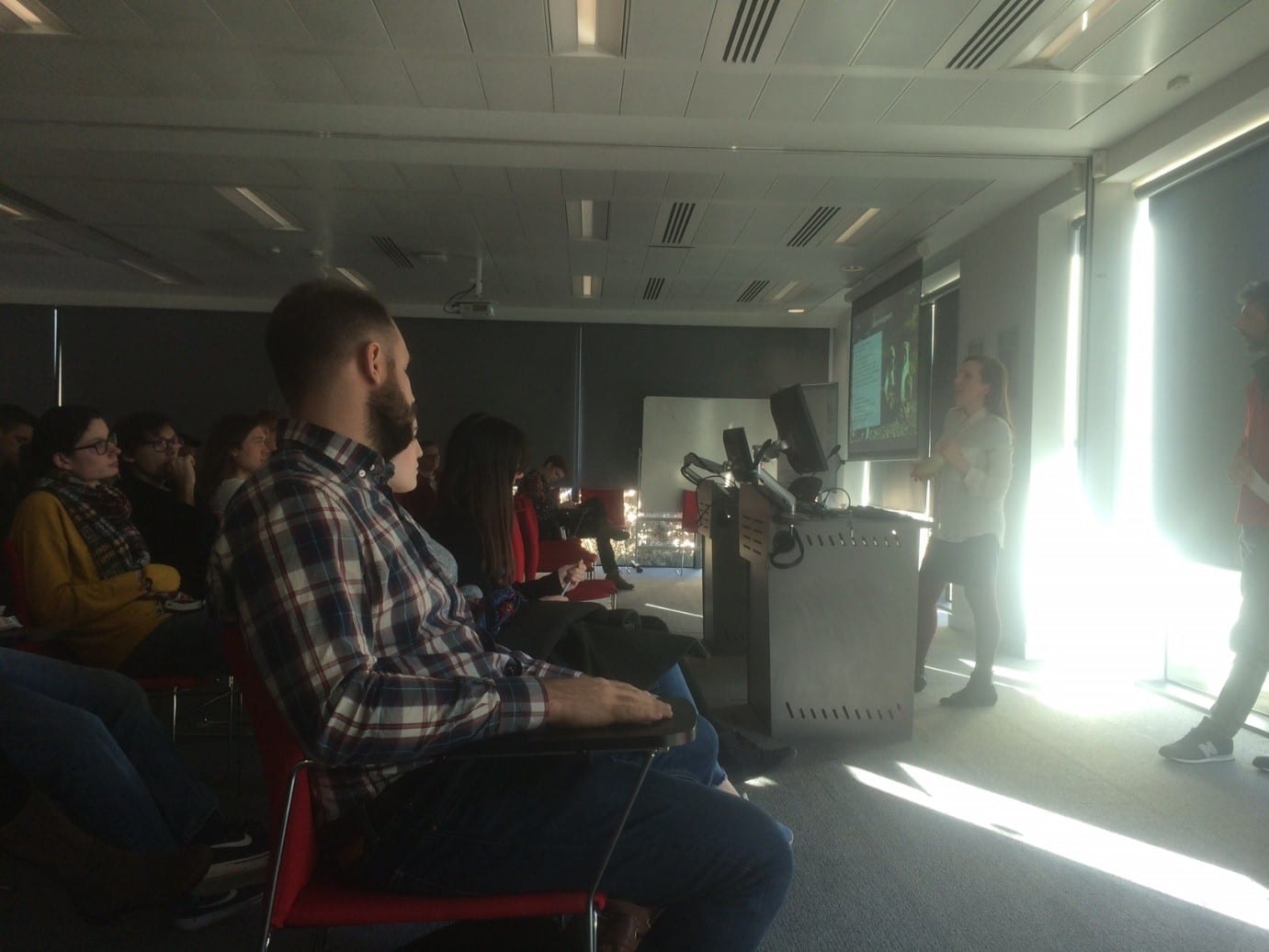A prominent voice in the field of animal behaviour, Dr Lauren Brent discusses her research into the interaction of ageing and sociality with a fascinating look at the lives of two charismatic social mammals.
Dr Lauren Brent seems to live an animal behaviourist’s dream. Not only does she travel the world studying some of the world’s most interesting animals, but she also shines a light on the physiological and evolutionary explanations behind their behaviour. This Monday students and staff were treated to a look at how age affects an individual’s engagement with the social world, and on the flipside of this, how the pace at which individuals age is affected by social processes. These two themes were neatly explored using Dr Brent’s research on the southern killer whales of British Columbia and the charismatic rhesus macaques of Cayo Santiago, Puerto Rico.
It became immediately apparent in the seminar how passionate Dr Brent is about her work and how carefully she selected the subjects for her research. Breaking the talk into two sections, she first spoke about how aged based differences in these two animal groups affect their social interactions. The killer whales were followed to see how this impacted on their collective movement, questioning whether, and if so why, older, post-reproductive females led group movement. On the other side of the world, data associated with grooming and aggressive encounters between female rhesus macaques were collected to see whether age affected the frequency and reciprocity of these social interactions.
“Southern resident killer whales are one of only five species known to undergo menopause”
Southern resident killer whales are one of only five species known to undergo menopause, and there is no sex-based dispersal in populations, with the family unit choosing to stay together for life and outbreeding. The long post-reproductive period of females (lasting any time up to fifty years) is similar to humans’ in its length, and it was unknown what influence this had on the sociality of the older females. In Dr Brent’s 2015 paper, a study of over nine years’ worth of video footage of the whales was visualised into leadership networks. This resulted in the discovery that in comparison to males, females were more likely to lead and that relative to younger females, post-reproductive female whales were the most likely leaders. To understand these results, further study was undertaken to find the situations in which the older females were more likely to lead. This research revealed that older females were more likely to lead when populations of chinook salmon (the species making up at least 85% of southern killer whale diet) were low. It was apparent then that as their age increased female whales became more important in directing the collective movement of the pod, perhaps a clear indicator that the enhanced world experience that comes with age influences how these individuals engage with their social world.
“The population of rhesus macaques on Coyo Santiago was perfect for her research because of its extensive life history records and closed gene pool”
Described by Dr Brent as ‘despotic and nepotistic’, the population of rhesus macaques on Cayo Santiago was perfect for her research because of its extensive life history records and closed gene pool. Like the killer whales, the social structure of the population was explained as being a close-knit community in which the females stay (philopatry) but where the males disperse. Habituating a predator-free, food-rich environment exposed the social pressures of group living and highlighted the aggressive, competitive nature of the macaques. To see if the age of the individuals affected the frequency and intensity of their social interactions, the exposure of females to grooming and aggressive encounters was studied. No evidence was found to show older females received less grooming than younger females, and no evidence was found that they ‘gave’ less aggression. However, it was discovered that older females gave out less grooming and received less aggression, clearly showing at some level age is affecting social engagement. Dr Brent discussed with us the questions left to answer as a result of this research; these older females were still active and engaged with the group, but what were the consequences of age in relation to this interaction which meant they were received differently by their relatives?
To analyse the interaction between ageing and sociality from the opposite direction, Dr Brent now wanted to see whether the pace at which individuals age is affected by social processes. In the macaques, it as was hypothesised that more socially integrated females lived longer. In this study, as a proxy for social integration, the number of close relatives in the troop was recorded for each of the 276 females in the study. Dr Brent revealed to us that for ‘prime-aged females between the ages of 6 and 17, every relative added decreased the probability of dying the next year by 2.3 %’. Interestingly, this was not the same for older females, where their level of social integration had no effect on their survival the next year. Again, this poses the question of why; as Dr Brent proposed, “do females have an alternative route to success?’.
The lecture was rounded off with an exclusive look at some of Dr Brent’s unpublished research and a first look at the new projects she has coming up, including investigating the possible evolutionary drivers behind sociality and ageing. The audience was also left with some questions to think about regarding the physiology behind ageing in a social world. Do all tissues age at the same pace? Are they equivalently impacted by sociality? And is this ageing the same for males and females? While ageing may be the focus of this field, it is young in its development and there are many exciting questions yet to be answered.
Written by Esme Hedley, Biology (BSc)



